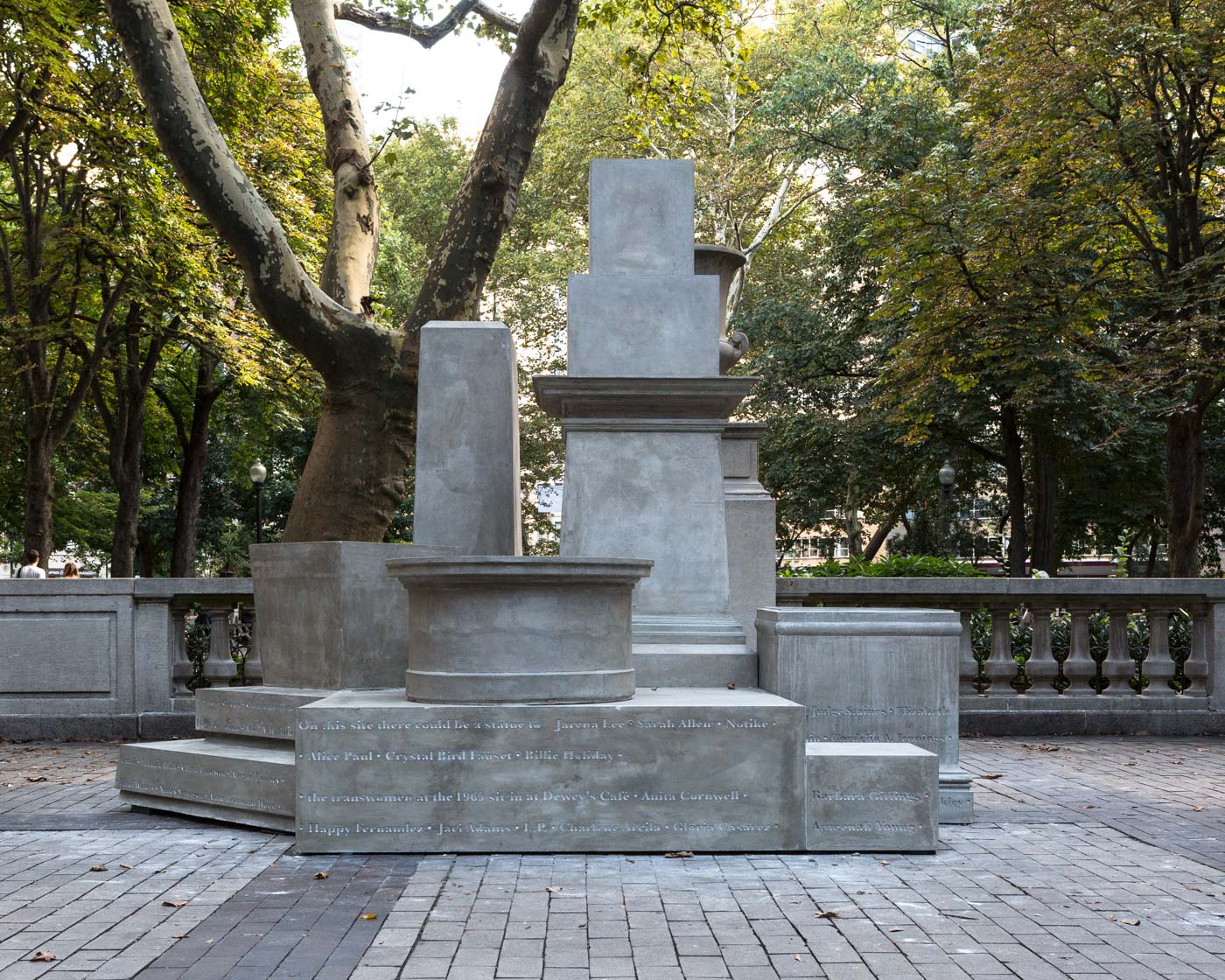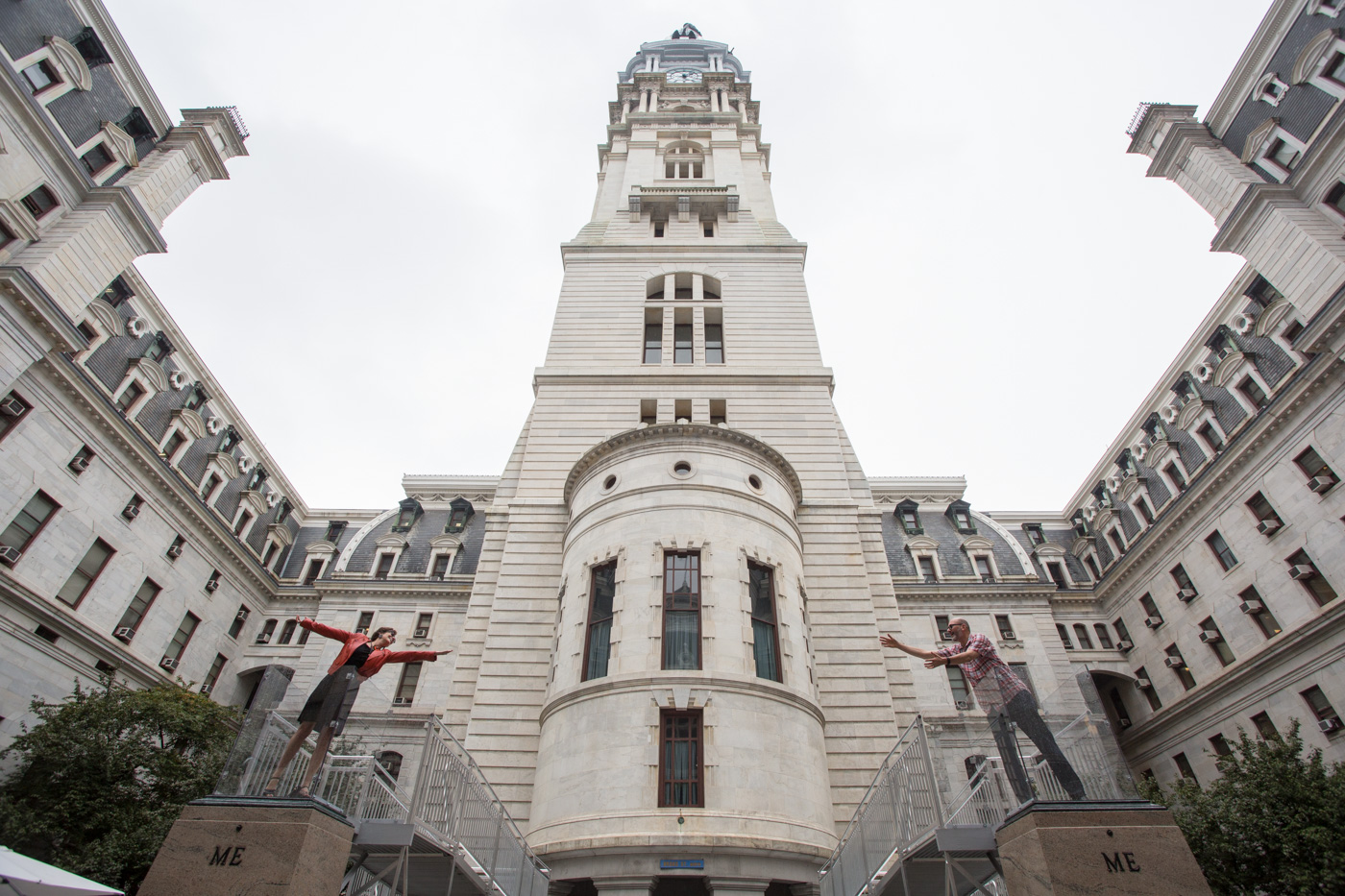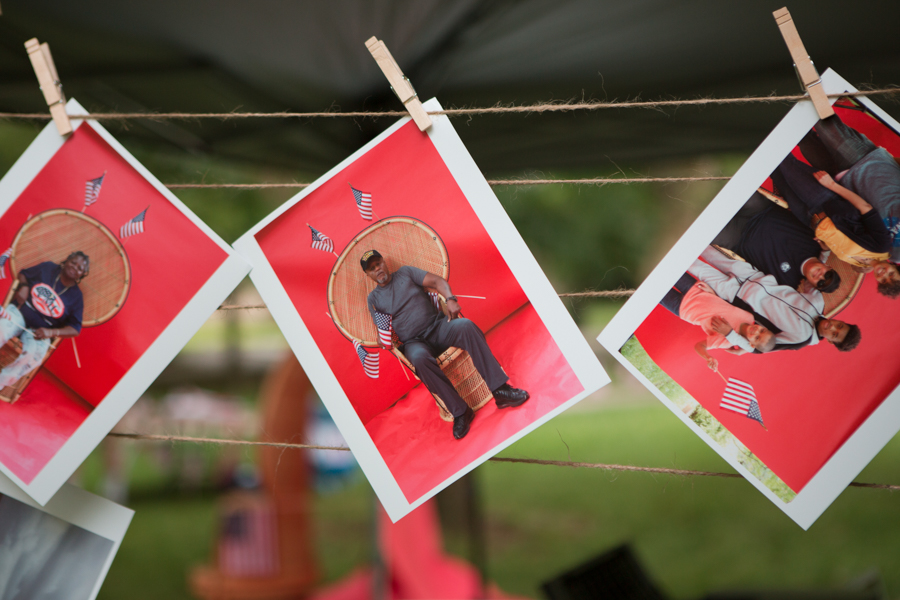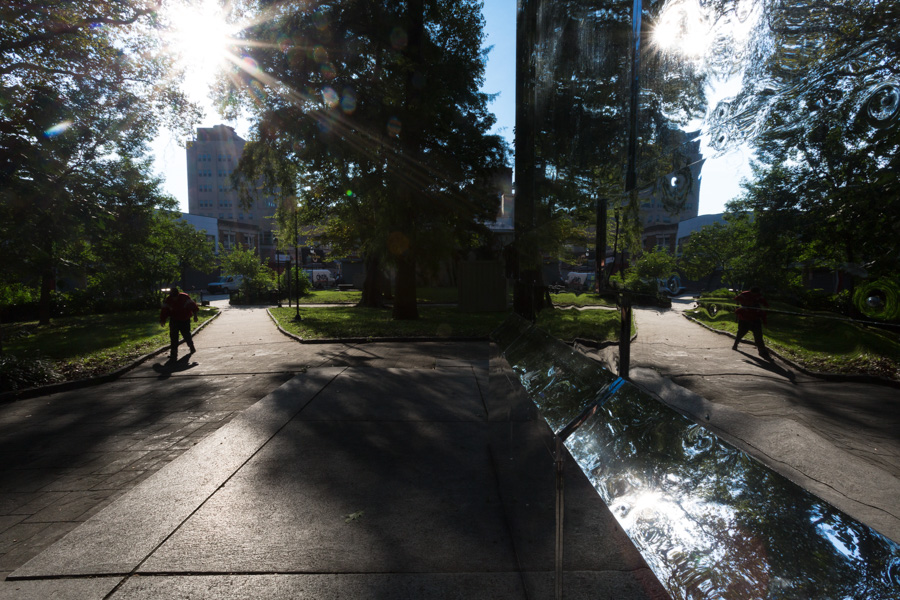Names and Renaming in Monument Lab

In the well-known fairy tale “Rumplestiltskin,” the antagonist is thwarted from his baby-stealing plans when our hero learns his name. Until that point in the story, his identity had been kept a secret, but when she utters his name, he loses his power. Naming is a way of looking at a person or a thing directly, and it is incredibly powerful. The story makes an apt metaphor. We cannot enact change if we don’t approach issues head-on.
Naming is a classic strategy for monuments and memorials—perhaps the most famous American example would be Maya Lin’s Vietnam Veterans Memorial in Washington, DC, which displays 57,000 names. In conversations with multiple Monument Lab artists, most of them mentioned Lin’s Vietnam memorial as an influence for their projects. Lin herself was influenced by Edwin Lutyens’ World War I memorial—the Thiepval Memorial to the Missing of the Somme—but she was also required, through a competition, to use the names of the veterans. The 9/11 Memorial, another well-known structure that lists out names, has a comparable story. If you look at the top contenders for the design competition, all use similar strategies, including the use of names. The act of naming is clearly not new when it comes to monuments and memorials.
But these examples use scale to convey gravity and loss. They are large, and their lists are long. How does naming function on a smaller scale? The President’s House in Philadelphia comes to mind—one of many historical sites in the Independence Hall area, the structure is an open-air installation that marks the location of George Washington’s house. The wall displays nine names: Austin. Paris. Hercules. Christopher Sheels. Richmond. Giles. Oney Judge. Moll. Joe. These are the names of the nine (known) people enslaved by Washington while he lived at 6th and Market. At a site that we often refer to as the birthplace of democracy, this monument calls attention to the inherent contradictions in America’s founding, but this short list also does something else. It reminds us that, whether one or 100 names, the letters carved into stone represent people whose lives matter. Those who are descended from people who were enslaved often don’t know their ancestors’ names—elevating the names on this short list is, in contrast, about recognizing, remembering, knowing. This is a complicated legacy.
Within Monument Lab, whether directly influenced by Maya Lin or not, many of the projects dealt with naming or renaming in one way or another. Sharon Hayes’ If They Should Ask is the most direct illustration of this concept: concrete pedestals display the names of 40 women who could have been recognized in public space, but weren’t (yet). Klip Collective’s names were ephemeral, but moving: at Marconi Plaza, Passage :: Migration projected hundreds of immigrant names from Philadelphia’s ship manifests, some in hundred-year-old handwriting. Two Me, Mel Chin’s monument at City Hall, reminded visitors that they could be named “me” while also identifying as part of a “we.” Marisa Williamson’s Sweet Chariot app gives name to people and histories around Washington Square that might otherwise be buried. Both monuments in Vernon Park deal with naming in a more visual way; Jamel Shabazz’s portraits make veterans in Germantown more visible as individuals, while Karyn Olivier’s project is a kind of renaming or reclaiming of the park space, making the longstanding monument actually reflect the people around it.
Names and monuments are both so much about the act of storytelling. Who tells the narrative, who speaks the name, who is named—these are all important. Monuments shape our public memory and civic identity, so when we name some but not others, we are changing the world. The story about Rumplestiltskin is a story, like so many, of a person who is taken advantage of while under duress. Trapped in an untenable situation, she feels powerless and makes a choice she regrets. In the end, she claims her power through the act of naming, but so does the audience. The story is called “Rumplestiltskin.” We’ve been naming him all along. Monument Lab reminds us, too, that we have the power to name, to speak, to propose a new future for our city. We can be the storytellers.
Lead Monument Lab partners include the City of Philadelphia; Philadelphia Parks & Recreation; Office of Arts, Culture, and the Creative Economy; Historic Philadelphia; Independence National Historic Park; Penn Institute for Urban Research; Pennsylvania Academy of the Fine Arts; Price Lab for Digital Humanities; and the University of Pennsylvania.
Major support for Monument Lab projects staged in Philadelphia’s five squares has been provided by The Pew Center for Arts & Heritage.
An expanded artist roster and projects at five neighborhood sites have been made possible by a significant grant from the William Penn Foundation.
Lead corporate sponsor is Bank of America.
Additional support has been provided by Susanna Lachs & Dean Adler, William & Debbie Becker, CLAWS Foundation, Comcast NBCUniversal, Davis Charitable Foundation, Hummingbird Foundation, J2 Design, National Endowment for the Arts, Nick & Dee Adams Charitable Fund, Parkway Corporation, PECO, Relief Communications LLC, Sonesta Philadelphia Rittenhouse Square, Stacey Spector & Ira Brind, Tiffany Tavarez, Tuttleman Family Foundation, Joe & Renee Zuritsky, and 432 Kickstarter backers. Support for Monument Lab‘s final publication provided by the Elizabeth Firestone Graham Foundation.
Media partner: WHYY





